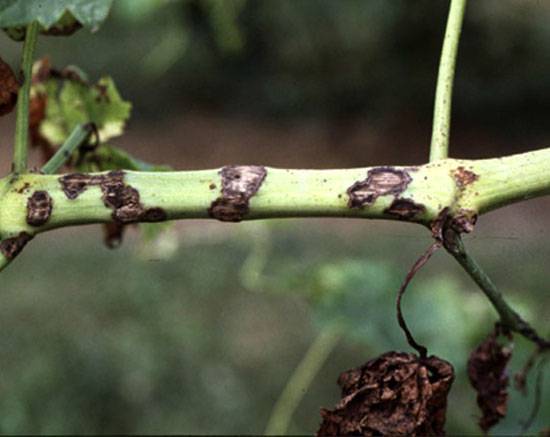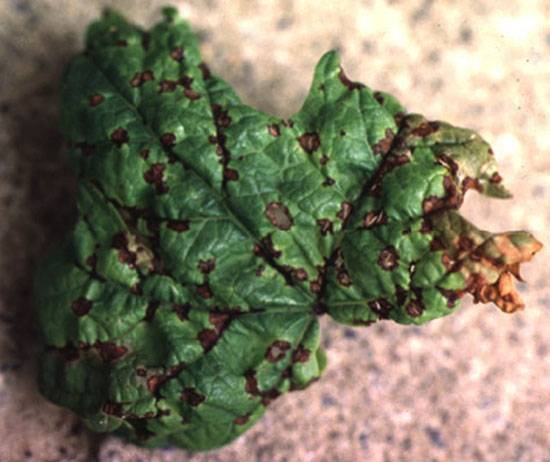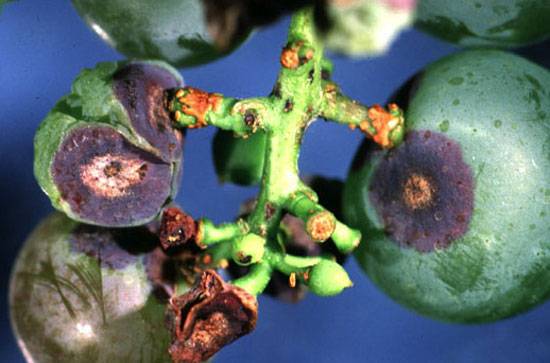Grapes
Anthracnose

Elsinoe ampelina
Fungal Disease

Elsinoe ampelina
Fungal Disease

Elsinoe ampelina
Fungal Disease
Anthracnose of grapes, caused by the fungus Elsinoe ampelina, is a destructive disease that can affect all succulent parts of the vine, including stems, leaves, tendrils, young shoots, and berries. However, the most common and recognizable symptoms are found on shoots and berries. Young shoots first show numerous small, circular reddish spots that expand into sunken lesions with gray centers and dark, reddish-brown to violet-black margins. These lesions can coalesce, causing significant blighting, brittleness, and cracking in the shoots. Anthracnose damage can sometimes be confused with hail injury, but the key difference is that anthracnose lesions have raised, black edges, unlike hail damage, which is usually restricted to one side of the shoot.
On leaves, anthracnose causes circular spots with gray centers and dark borders, eventually leading to a shot-hole appearance as the necrotic tissue falls out. Young leaves are more susceptible to infection, and when veins are affected, leaves may become malformed or completely dry out. In berries, small reddish spots develop into larger sunken lesions, creating the characteristic "bird’s eye" rot appearance with whitish-gray centers surrounded by dark margins. Infected fruit may crack, and fungal spores (conidia) are exuded during prolonged wet weather, contributing to disease spread.
Causal Organism and Disease Development
The anthracnose fungus, Elsinoe ampelina, overwinters in vineyards as sclerotia (fungal survival structures) on infected shoots. In spring, when temperatures rise above 36°F and moisture is present for 24 hours or more, these sclerotia germinate to release conidia, which are the primary source of infection. These conidia are spread by splashing rain to new growing tissues, initiating new infections. A secondary type of spore, called an ascospore, can also form on infected canes and fallen berries, but the role of ascospores in disease spread is less clear.
Conidia are the primary source of inoculum in early spring, with germination occurring in temperatures between 2°C and 32°C. Higher temperatures accelerate disease development. Infections take longer to develop at cooler temperatures, with symptoms appearing in about 13 days at 2°C and just 4 days at 32°C. Wet weather and warm temperatures create ideal conditions for anthracnose outbreaks.
Once established, the disease continues to spread throughout the growing season via conidia produced in asexual fruiting bodies (acervuli) on diseased tissues. These conidia serve as the secondary inoculum and drive ongoing infections in the vineyard, especially during periods of rain or high humidity.
Additionally, grape growers should always refer to the latest guidelines from APEDA (Agricultural and Processed Food Products Export Development Authority) and NRC Grapes when selecting fungicides. These guidelines ensure compliance with export requirements regarding harmful fungicide and pesticide residue levels (MRLs), which are regularly updated.
Image Source and Ref: Ohio State University Extension




